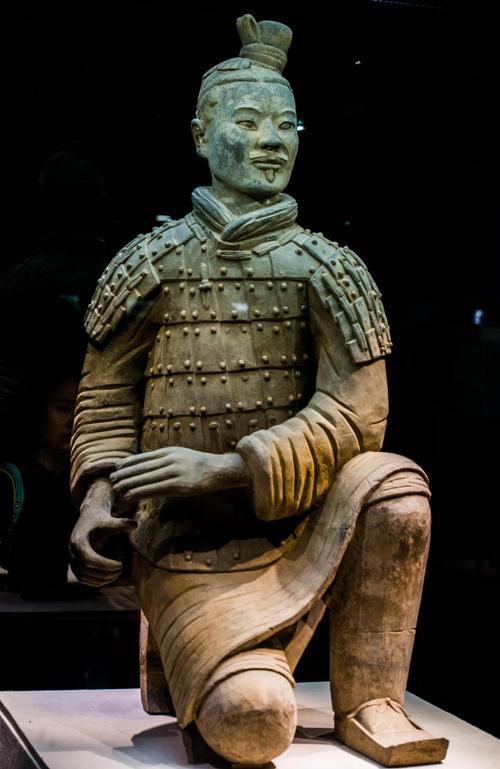
What Are the Terracotta Warriors and Horses?
The Terracotta Army is a collection of terracotta sculptures depicting the armies of Qin Shi Huang, the first emperor of China. It is a vast funerary art army buried with the emperor in 210–209 BCE, designed to protect the emperor in his afterlife.
Location and Discovery
The Terracotta Army is located in Lintong District, Xi'an, Shaanxi province, central China, about 35 km (22 mi) northeast of Xi'an's city center.
The figures were discovered in 1974 by local farmers who were digging a well approximately 1.5 kilometers (0.93 mi) east of the emperor's tomb mound at Mount Li (Lishan), a region riddled with underground springs and watercourses. Since then, the site has become one of the most significant archaeological excavations in the world and a UNESCO World Heritage Site.
The Army's Composition and Significance
The Terracotta Army is a form of funerary art buried with the emperor in 210–209 BCE to protect the emperor in his afterlife. The figures vary in height according to their roles, with the tallest figures being the generals. The figures include warriors, chariots, horses, and other figures, all positioned as if prepared for battle.
-
Warriors: The army is composed of over 8,000 life-size terracotta soldiers, each with unique facial features, hairstyles, and armor. They represent the different ranks and military branches of the Qin army, including infantry, cavalry, and archers.
-
Chariots: Over 130 chariots have been unearthed, each drawn by bronze-adorned horses and manned by charioteers. These chariots were high-status vehicles used by both soldiers and high-ranking officials.
-
Horses: These horse statues were modeled on the domesticated war-horse. They are life-sized: about 1.7 meters (5.6 feet) in height and 2 meters (6.7 feet) in length. The terracotta horses belonged to the cavalry. Some were allocated to cavalry soldiers, while others pulled the chariots.
The Terracotta Army is significant for several reasons:
-
Historical Significance: The figures provide invaluable insights into the military organization, weaponry, and armor of the Qin dynasty.
-
Artistic Significance: The Terracotta Army stands as a testament to the artistic skill and craftsmanship of the Qin dynasty. The life-size figures display incredible detail and realism, capturing the individual features of each soldier and horse.
-
Cultural Significance: The Terracotta Army is a symbol of Chinese history and culture, attracting millions of visitors from around the world each year.
Construction and Materials
The figures were constructed in workshops by government laborers using locally available clay. The heads, arms, legs, and torsos of the figures were created separately and then assembled using a slip made from the same clay.
After assembly, details like facial features, hairstyles, and armor were added, and the figures were fired in kilns at temperatures ranging from 800 to 900 degrees Celsius.
The use of different molds and hand-carving techniques ensured that each figure had a unique appearance.
The Terracotta Army Today
Today, the Terracotta Army is one of the most popular tourist destinations in China. Visitors can marvel at the scale and grandeur of the army and learn about the history of the Qin dynasty. Ongoing excavations and research continue to reveal new insights into this remarkable archaeological treasure.
Q&A
Q: Why was the Terracotta Army created?
A: The Terracotta Army was created to accompany Qin Shi Huang, the first emperor of China, in his afterlife. It was believed that the army would protect him and help him rule in the next world.
Q: How were the Terracotta Warriors colored?
A: Evidence suggests that the Terracotta Warriors were originally painted in bright colors, enhancing their realism. However, exposure to air and moisture over centuries has caused much of the paint to flake off.
Q: Are there any female warriors in the Terracotta Army?
A: While the vast majority of the figures are male, there is evidence to suggest that female warriors may have also been part of the Qin army. Some terracotta figures display features that could be interpreted as feminine, but further research is needed to confirm this.